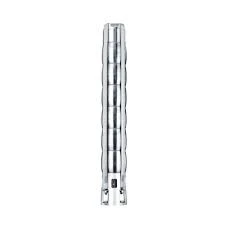Dec . 01, 2024 19:50 Back to list
Testing Procedures for Non-Operational Submersible Pumps in Dry Run Scenarios
Understanding the Dry Run of Submersible Pumps
Submersible pumps are essential devices that are widely used in various applications, from dewatering construction sites to draining flooded basements and even in agricultural irrigation. However, one of the critical aspects of operating submersible pumps is understanding the implications of a dry run. A dry run occurs when a pump operates without sufficient liquid (usually water) in its intake. This situation can lead to significant damage to the pump and its components, and it is imperative to grasp why it happens, its consequences, and how to prevent it.
What Causes a Dry Run?
A dry run can occur for several reasons. The most common cause is a drop in the water level in the source from which the pump draws water. This can happen due to prolonged pumping when water is being depleted faster than it can naturally replenish. Other contributing factors may include malfunctioning float switches that fail to detect low water levels or improper installation of the pump, leading to air entering the system.
Consequences of a Dry Run
The repercussions of a dry run can be severe, potentially leading to both immediate and long-term damage to the submersible pump
. When the pump operates without water, several critical issues arise1. Overheating Submersible pumps are designed to cool themselves through the liquid they are immersed in. When a pump runs dry, it can quickly overheat, as there is no liquid to dissipate the heat generated by the motor.
2. Seal Damage The mechanical seals within the pump are typically lubricated and cooled by the fluid. Running the pump dry can lead to seal failure, resulting in leaks and the subsequent need for costly repairs or replacements.
3. Impeller Damage The impeller blades are designed to push fluid efficiently. Running the pump without water can cause the impeller to collide with the pump casing, leading to bending, cracking, or complete failure of the component.
dry run submersible pump

4. Motor Burnout The electric motor is at risk of burning out due to the intense heat generated from friction. This can result in the need for a complete motor replacement, which can be a significant operational setback.
Preventing Dry Runs
To minimize the risks associated with dry running, several proactive measures can be taken
1. Install Float Switches Proper float switches can automatically shut off the pump when water levels drop below a predefined threshold. This safety mechanism is essential in avoiding dry runs.
2. Regular Maintenance Routine checks and maintenance of the pump system are crucial. This includes inspecting the float switches, seals, and overall pump condition. Regular maintenance can identify potential issues before they lead to dry running.
3. Smart Pump Control Systems Many modern submersible pumps come equipped with smart control systems that can monitor water levels and automatically adapt operations to prevent dry running.
4. Education and Training Ensuring that personnel operating the pumps are educated about the implications of dry running and are trained to monitor conditions diligently can significantly reduce the likelihood of occurrences.
Conclusion
Understanding the concept of dry running in submersible pumps is vital for anyone involved in the operation and maintenance of these devices. By recognizing the causes and consequences along with implementing effective preventive measures, users can ensure the longevity and reliability of their pumps. Taking these steps not only protects the investment in equipment but also guarantees uninterrupted service in critical applications. Investing time in education, maintenance, and proper setup can save costly repairs and downtime in the long run, making it a wise approach for sustainable operation.
-
Submersible Water Pump: The Efficient 'Power Pioneer' of the Underwater World
NewsJul.01,2025
-
Submersible Pond Pump: The Hidden Guardian of Water Landscape Ecology
NewsJul.01,2025
-
Stainless Well Pump: A Reliable and Durable Pumping Main Force
NewsJul.01,2025
-
Stainless Steel Submersible Pump: An Efficient and Versatile Tool for Underwater Operations
NewsJul.01,2025
-
Deep Well Submersible Pump: An Efficient 'Sucker' of Groundwater Sources
NewsJul.01,2025
-
Deep Water Well Pump: An Efficient 'Sucker' of Groundwater Sources
NewsJul.01,2025
-
 Submersible Water Pump: The Efficient 'Power Pioneer' of the Underwater WorldIn the field of hydraulic equipment, the Submersible Water Pump has become the core equipment for underwater operations and water resource transportation due to its unique design and excellent performance.Detail
Submersible Water Pump: The Efficient 'Power Pioneer' of the Underwater WorldIn the field of hydraulic equipment, the Submersible Water Pump has become the core equipment for underwater operations and water resource transportation due to its unique design and excellent performance.Detail -
 Submersible Pond Pump: The Hidden Guardian of Water Landscape EcologyIn courtyard landscapes, ecological ponds, and even small-scale water conservancy projects, there is a silent yet indispensable equipment - the Submersible Pond Pump.Detail
Submersible Pond Pump: The Hidden Guardian of Water Landscape EcologyIn courtyard landscapes, ecological ponds, and even small-scale water conservancy projects, there is a silent yet indispensable equipment - the Submersible Pond Pump.Detail -
 Stainless Well Pump: A Reliable and Durable Pumping Main ForceIn the field of water resource transportation, Stainless Well Pump has become the core equipment for various pumping scenarios with its excellent performance and reliable quality.Detail
Stainless Well Pump: A Reliable and Durable Pumping Main ForceIn the field of water resource transportation, Stainless Well Pump has become the core equipment for various pumping scenarios with its excellent performance and reliable quality.Detail
